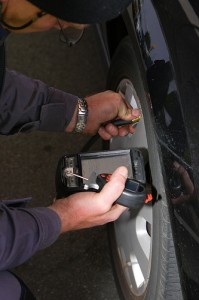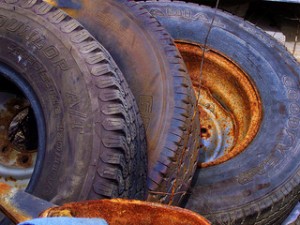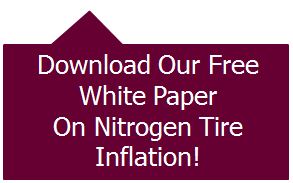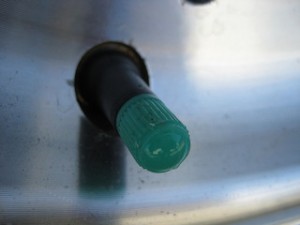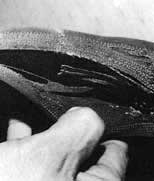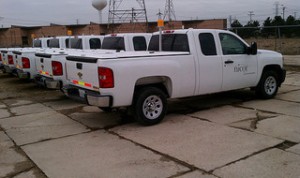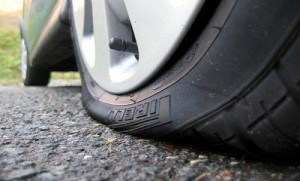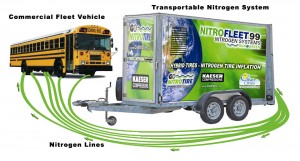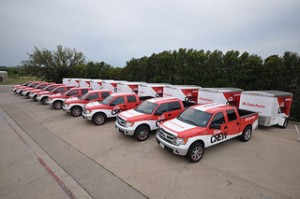 When managed fleets consider adopting nitrogen tire inflation, the biggest question about the change is the return on investment. If we spend the money on a few nitrogen inflation carts and implement the process, then when will the machines pay for themselves? What benefits will the fleet specifically see from nitrogen, when air is already 78 percent nitrogen?
When managed fleets consider adopting nitrogen tire inflation, the biggest question about the change is the return on investment. If we spend the money on a few nitrogen inflation carts and implement the process, then when will the machines pay for themselves? What benefits will the fleet specifically see from nitrogen, when air is already 78 percent nitrogen?
The main benefit of nitrogen tire inflation is that nitrogen maintains proper tire pressure for a longer period of time than regular air, leading to whole host of other benefits to your fleet. To explain these benefits and how they impact your bottom line, we’re going to go through our money saving calculator and explain each section and how a fleet saves money with each section.
Miles Driven Per Year
The average fleet vehicle drives between 15,000 and 20,000 miles per year, but the average for your fleet may be higher or lower, depending on a variety of factors. Our money saving calculator needs this figure to determine the savings from the next three sections. To clarify, this number refers to the average number of miles for one vehicle in your fleet, since our calculator determines the savings based on one vehicle. It doesn’t not calculate the savings for an entire fleet, although that is easy to figure out once the calculator has the savings for one vehicle. Obviously, the more miles driven in a year, the savings your managed fleet could see from nitrogen tire inflation.
Average Price of Gas Per Gallon
Currently, the average price for a gallon of gas is $3.68. For diesel fuel, the average price is $3.88 per gallon. Nitrogen tire inflation improves your fleet’s fuel efficiency by maintaining proper tire pressure for a longer period of time. Proper tire pressure, by itself, increases fuel efficiency by three percent. Three percent doesn’t seem like a big deal, but multiply that across your 50, 1000, or 10,000 fleet vehicles driving on under-inflated or over-inflated tires, and your managed fleet is wasting money in fuel.
MPG
According to the most recent statistics, the average miles per gallon for U.S. fleet vehicles is 23.2 mpg. The average for all cars in the U.S. is 24.6 mpg. If you happen to know the average miles per gallon for your fleet, or have a way to come up with that number, then use that number in the calculator. Otherwise, you’re welcome to use the average numbers that we have provided.
Cost of a Full Set of Tires
For a fleet vehicle that has four wheels (versus an 18-wheeler or any other specialized fleet vehicle), the cost of full set of tires is about $600. Besides the four tires, this price also includes mounting and balancing, disposal of the old tires, alignment and the valve stems. Since nitrogen tire inflation improves tire life and tread wear (because nitrogen maintains proper tire pressure for a longer period of time, so the tread wears evenly versus just the middle or the outer edge), a managed fleet gets more out of each $600 purchase. The tires last longer, so a managed fleet gets more value for its money. Because the tires last longer, the $600 purchase needs to be made less often.
Conclusion
If we put the average numbers into the calculator to determine the savings with nitrogen tire inflation (20,000 miles, $3.68 per gallon, 24 mpg and $600), then the annual savings for one fleet vehicle using nitrogen tires is $150.09. For one vehicles, that’s not a whole lot, which is why we don’t focus on encouraging nitrogen tires in the consumer market (we won’t actively discourage it either, to be clear).
But, for a managed fleet of 1,000 vehicles, then the fleet can save $150,000 using nitrogen tire inflation. That is a substantial amount of savings, especially when the fleet considers how much it is currently spending on tires, fuel, maintenance, safety and anything else needed to keep the each of the fleet’s vehicles running. Even for a fleet of 100 vehicles, where the annual savings would only be $15,000, is still the equivalent of a part-time employee. Implementing a nitrogen tire inflation program into your managed fleet may cost $15,000, but it certainly isn’t going to cost $150,000, so the return on investment is clear.
photo credit: State Farm via photopin cc

